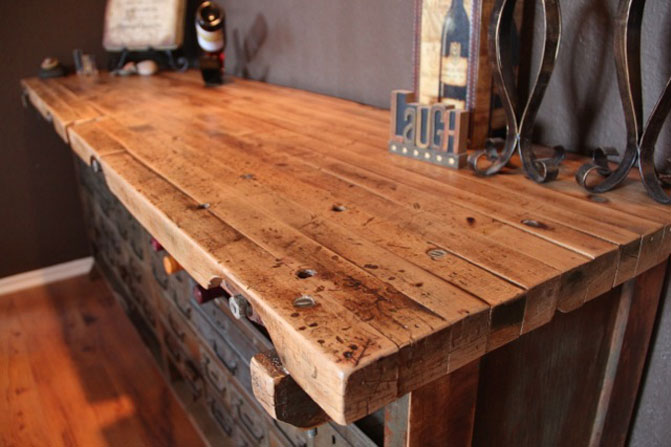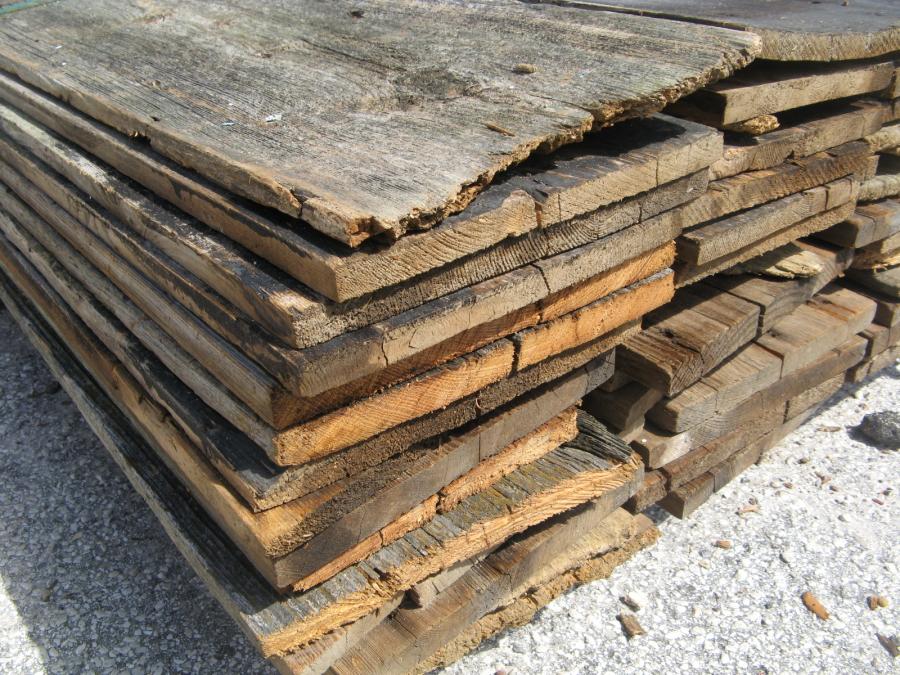Bits and Tips About Working with Reclaimed Wood
Reclaimed Wood Defined
Simply put, a reclaimed wood is an aged wood salvaged to be given a new life and glory when the original piece or structure for which it was used was torn down or destroyed. Decade- and century-old barns, warehouses, and even wine barrels and coal mine boxcars are the common sources of lumber or timber that are retrieved and then recycled for a different purpose. Over the years, and because of the integrity of its strength and distinct appearance, the use of reclaimed wood has vastly grown in popularity, especially in the construction and home decoration industry.

Image credit: unveiledpotential.com
Without doubt, reclaimed wood offers the kind of beauty and quality that we don’t normally expect from things that have been used for a very long time. The idea of recycling something old to create something new and of saving a tree from being cut down for new timber also makes using reclaimed wood a viable option for green builders and homemaker.
Moreover, using wood that has stood the test of time and survived changing seasons for tens or hundreds of years somehow increases one’s confidence in the structure for which it is re-used. Add to that the warm, and subtly rustic but elegant look and feel it can give your home and you’d most likely be sold out to the idea of using reclaimed wood in no time.
But just as there are advantages, using reclaimed wood also pose difficulties that you need to consider before making a final decision.
Possible Drawbacks of Using Reclaimed Wood
Authenticity
Sadly, some dealers ride on reclaimed wood’s popularity and make fake claims about their products’ source to boost their sales. To be sure of the wood’s authenticity, buy only from certified and reputable dealers.
Cost
Because of the process it needs to undergo before it is ready for use, reclaimed wood generally cost higher than virgin wood. But if you have experience working with lumber and you’re confident enough to do the deconstructing, nail pulling, and preparation process yourself, you can lower the cost and save money.
Treatments
A reclaimed wood might have been treated with chemicals and paint containing lead, adhesives, and other volatile organic compounds. For your safety, do some research about the wood’s past life, the treatments it has undergone, and then test the wood for possible toxins before purchasing and using it.
Infestation
Wood is one of many invasive pests’ favorite habitats. Before deconstructing a structure to get your wood or purchasing a reclaimed lumber from a dealer, check for signs of possible infestation like presence of bugs, holes, or crumbling pieces. If you’ll use it for building construction, make sure it’s kiln-dried.
Hazards
If you sourced your reclaimed wood on your own, you’ll need to sort and process it yourself. Wear protective gloves and carefully inspect it for dangerous items like bugs and rogue nails before using it for your project.
Waste Factor
Cutting several pieces of reclaimed wood to a uniform size can result in high waste factor as the material has to be re-milled. Also, some parts of the wood may not be good enough to be reclaimed and this would limit the size of the wood that may be available for use.
Availability
Majority of wood that you can find in reclamation projects are often made up of a few species that are usually indigenous to an area. This could make it harder for you to find enough amount of wood, especially if you’re planning to work on a big project.

Things About Using Reclaimed Wood That You Would Appreciate Knowing
Here are some interesting things that can help broaden your understanding of reclaimed wood’s characteristics. These will also help you maximize it and minimize the dangers when working with it.
- Reclaimed woods have gone through changing humidity levels and many cycles of expanding and contracting for decades or centuries. This makes it a more stable material than newly sawn wood when used with radiant heating systems such as those used in floorings.
- Ancient timber is intrinsically stronger and has more dense growth rings than younger lumber. Thus, the beams and planks that you can create from them are relatively larger and wider than the ones you can make with new lumber.
- If you’re working with century-old reclaimed wood, it’s possible you may still find some classically aged hand-hewn beams and sidings with faded patina and saw marks left by craftsmen from hundreds of years ago, which is pretty cool.
- There are organizations that certify that certain standards for sustainable practices have been met in processing reclaimed wood. It would help to know which are duly-certified not just to guarantee safety but to also help protect the environment.
- It’s likely that you won’t be able to use every inch of your reclaimed wood so it would be wise to get a little more than what you have targeted for.
- If you want to keep the patina, you can use heavier-grit sandpaper and just lightly sand the wood to get rid of splinters.
- The wood’s outside surface and end grain are the interesting parts of the material. Keep that in mind when cutting it.
- To treat your reclaimed wood without hurting its natural appearance and qualities, you may apply wax or satin finishes.
- Because old wood grew in an environment where it had to fight for sun and nutrients, reclaimed lumber are way stronger and more durable that they hit up to 40 points harder on the Janka hardness than virgin wood does.
In terms of quality, strength, appearance, and the stories of old barns, decommissioned buildings, homes, schools and railroads that a piece of reclaimed wood offers and has acquired through the years, you’re sure to find satisfaction from salvaging aged and weathered wood and giving it a new purpose and story to make and tell for years to come.
Read more: Types of Wood Joint

